Abstract
The level of intermediates of the photosynthetic carbon cycle was measured in intact spinach chloroplasts in an attempt to determine the cause of the induction lag in CO2 assimilation. In addition, transient changes in the level of the intermediates were determined as affected by a light-dark period and by the addition of an excess amount of bicarbonate during a period of steady photosynthesis. Assayed enzymically were: ribulose 1,5-diphosphate, pentose monophosphates (mixture of ribose 5-phosphate, ribulose 5-phosphate and xylulose 5-phosphate, hexose monophosphates (mixture of glucose 6-phosphate, glucose 1-phosphate, and fructose 6-phosphate), glyceraldehyde 3-phosphate, dihydroxyacetone phosphate, glycerate acid 3-phosphate, a mixture of fructose 1,6-diphosphate and sedoheptulose 1,7-diphosphate, adenosine triphosphate (ATP), adenosine diphosphate (ADP), and adenosine monophosphate (AMP).
The lag in CO2 fixation appeared to be the result of low levels of pentose monophosphates. The level of ribulose 1,5-diphosphate was roughly equal in chloroplasts showing immediate linear kinetics with respect to CO2 fixation and chloroplasts which exhibited an initial lag.
Following a light-dark transition, CO2 fixation ceased immediately but the level of glycerate 3-phosphate increased while ribulose 1,5-diphosphate was only slightly effected. The increase in level of glycerate 3-phosphate was correlated with a decrease in triose phosphate. Within 3 to 5 min in the light, ATP reached a maximum concentration while in darkness, all was utilized in 30 to 60 sec. The rapid loss of ATP was ascribed to an ATPase rather than to its utilization in kinase reactions.
A rapid increase in CO2 concentration enhanced the level of triose phosphate, but the level of glycerate 3-phosphate showed only a small overshoot and was considered as evidence that reducing power was not a rate limiting factor. Data were obtained indicating that triose phosphates similar to pentose monophosphates and in contrast to fructose 6-phosphate, glucose 6-phosphate and glucose 1-phosphate could be transported between chloroplast and suspending medium. Differential import and export of phosphorylated compounds may serve as routes alternative to starch and sucrose for the flow of carbon into biosynthetic pathways.
Full text
PDF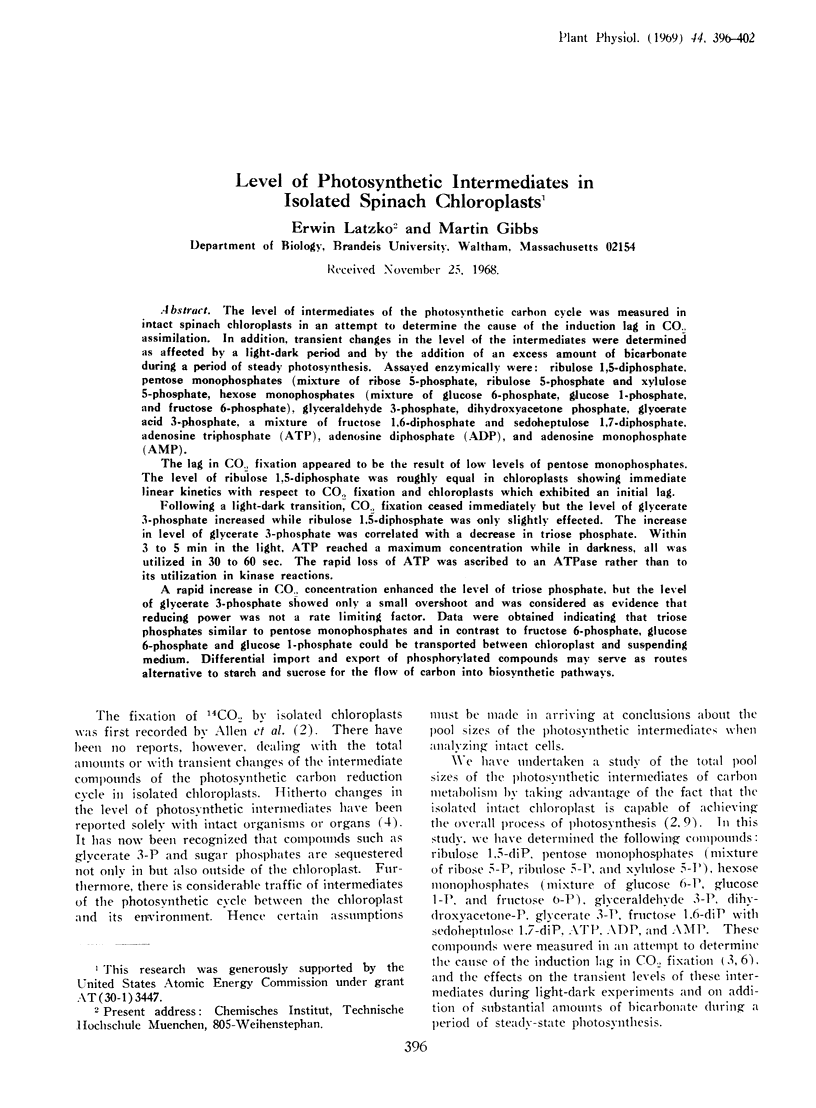
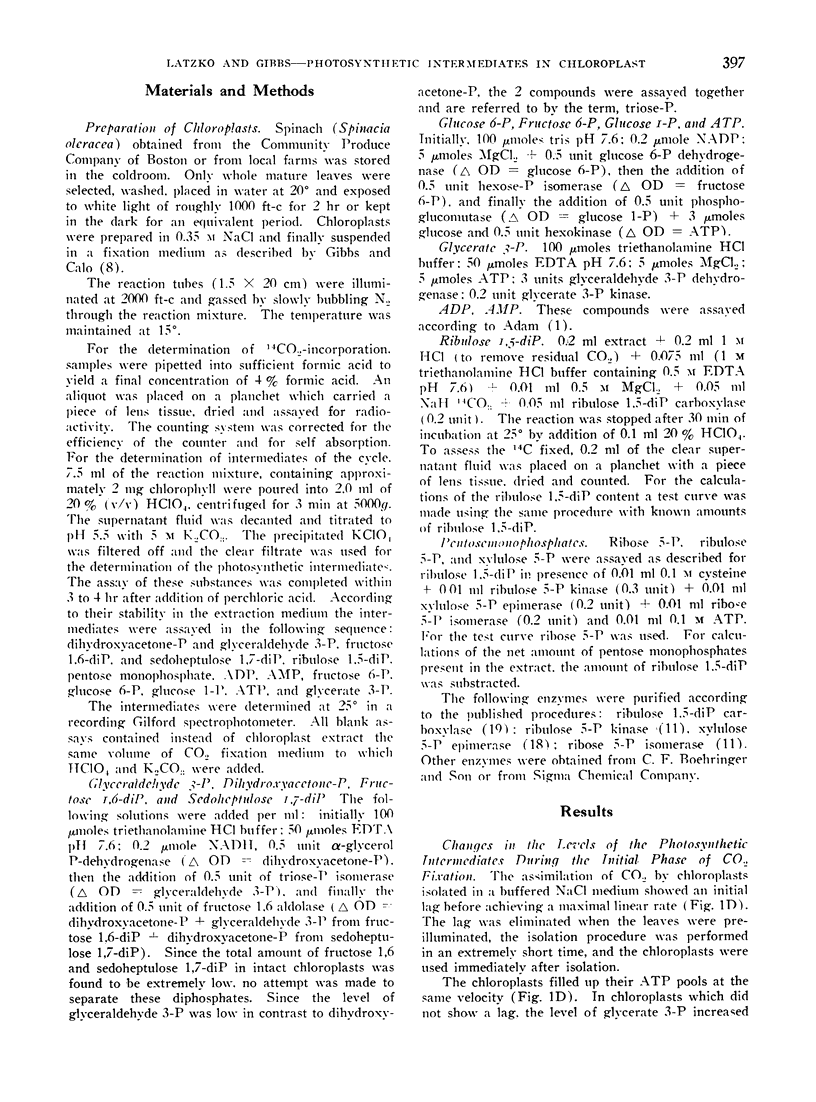
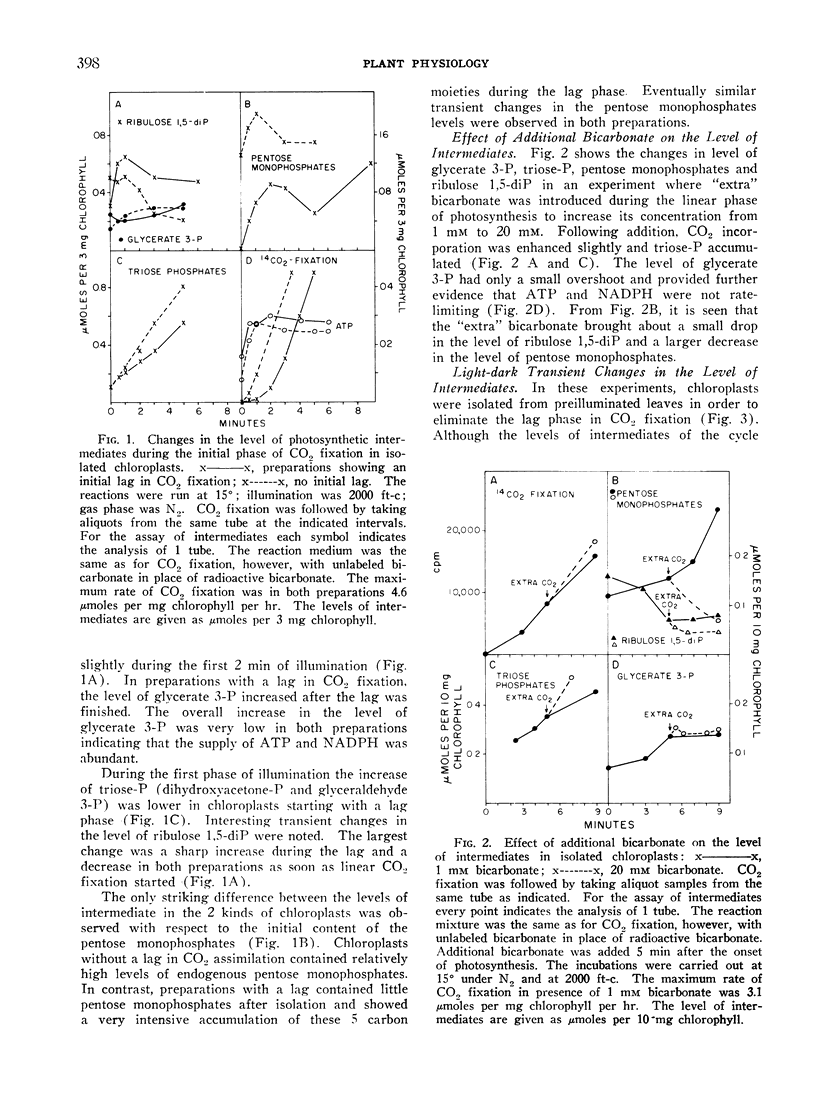
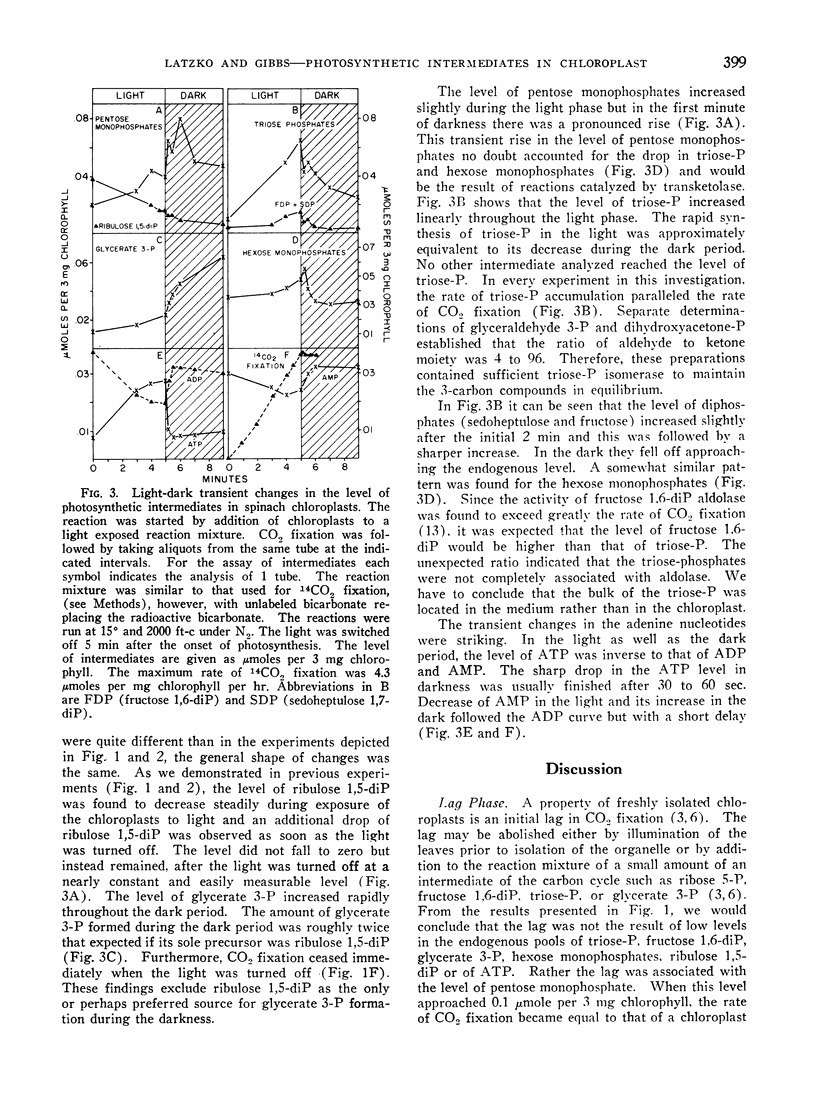
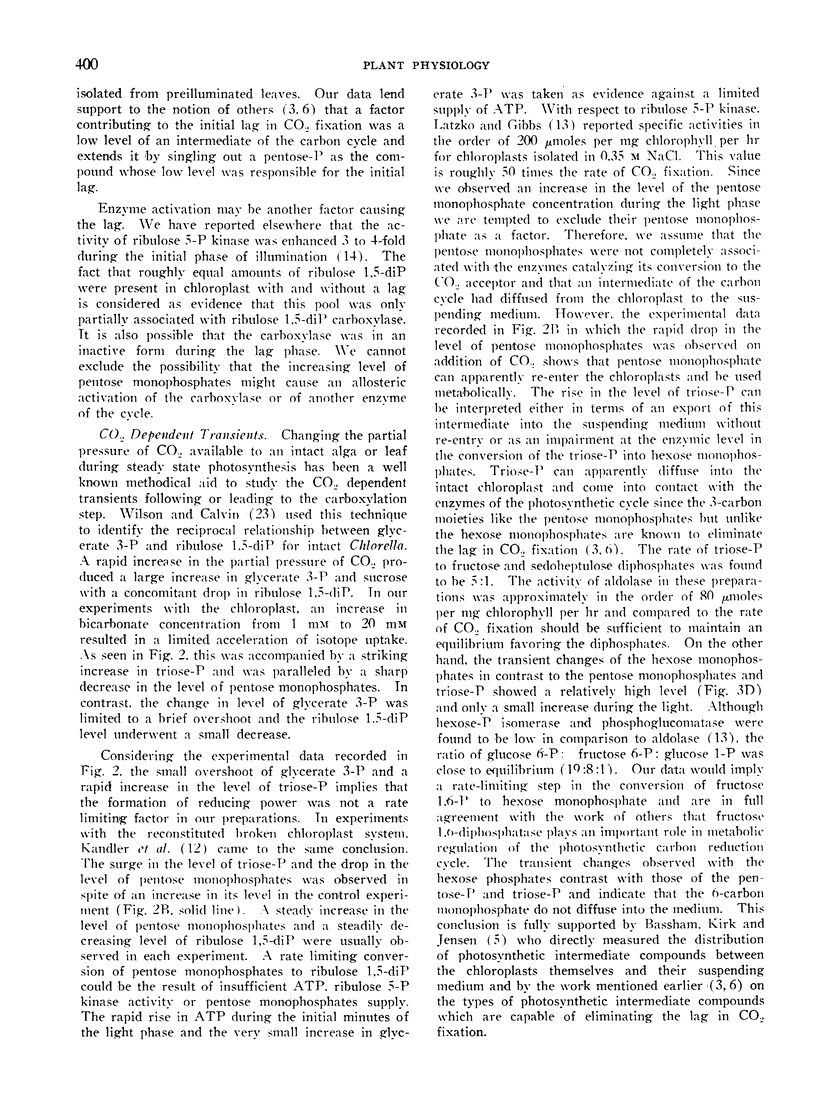
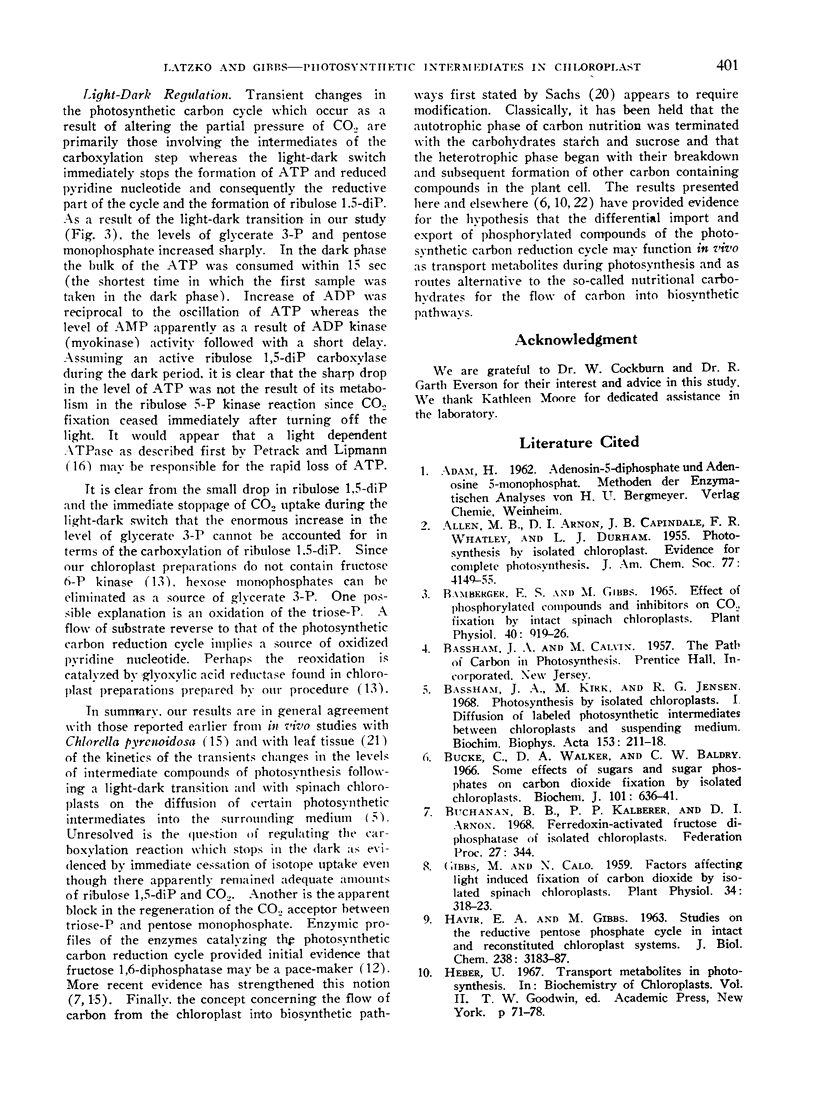
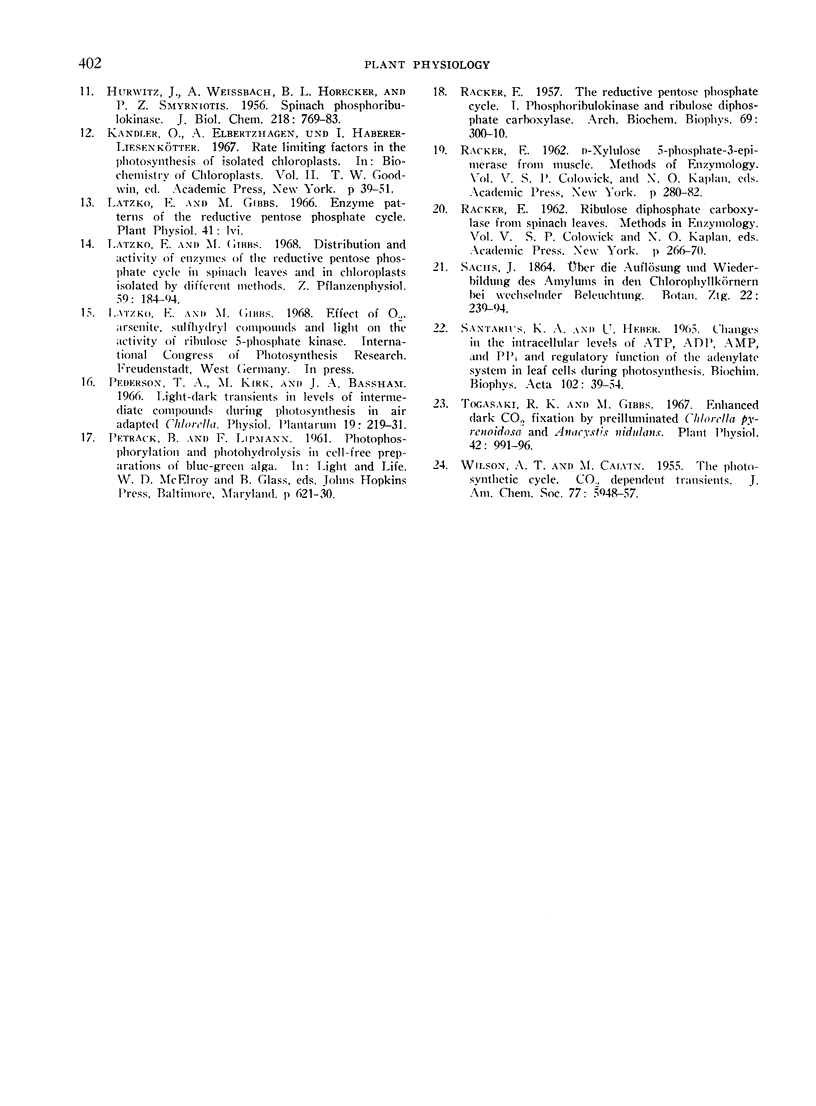
Selected References
These references are in PubMed. This may not be the complete list of references from this article.
- Bamberger E. S., Gibbs M. Effect of Phosphorylated Compounds and Inhibitors on CO(2) Fixation by Intact Spinach Chloroplasts. Plant Physiol. 1965 Sep;40(5):919–926. doi: 10.1104/pp.40.5.919. [DOI] [PMC free article] [PubMed] [Google Scholar]
- Bassham J. A., Kirk M., Jensen R. G. Photosynthesis by isolated chloroplasts. I. Diffusion of labeled photosynthetic intermediates between isolated chloroplasts and suspending medium. Biochim Biophys Acta. 1968 Jan 15;153(1):211–218. doi: 10.1016/0005-2728(68)90162-x. [DOI] [PubMed] [Google Scholar]
- Bucke C., Walker D. A., Baldry C. W. Some effects of sugars and sugar phosphates on carbon dioxide fixation by isolated chloroplasts. Biochem J. 1966 Dec;101(3):636–641. doi: 10.1042/bj1010636. [DOI] [PMC free article] [PubMed] [Google Scholar]
- Gibbs M., Calo N. Factors Affecting Light Induced Fixation of Carbon Dioxide by Isolated Spinach Chloroplasts. Plant Physiol. 1959 May;34(3):318–323. doi: 10.1104/pp.34.3.318. [DOI] [PMC free article] [PubMed] [Google Scholar]
- HAVIR E. A., GIBBS M. STUDIES ON THE REDUCTIVE PENTOSE PHOSPHATE CYCLE IN INTACT AND RECONSTITUTED CHLOROPLAST SYSTEMS. J Biol Chem. 1963 Oct;238:3183–3187. [PubMed] [Google Scholar]
- HURWITZ J., WEISSBACH A., HORECKER B. L., SMYRNIOTIS P. Z. Spinach phosphoribulokinase. J Biol Chem. 1956 Feb;218(2):769–783. [PubMed] [Google Scholar]
- RACKER E. The reductive pentose phosphate cycle. I. Phosphoribulokinase and ribulose diphosphate carboxylase. Arch Biochem Biophys. 1957 Jul;69:300–310. doi: 10.1016/0003-9861(57)90496-4. [DOI] [PubMed] [Google Scholar]


